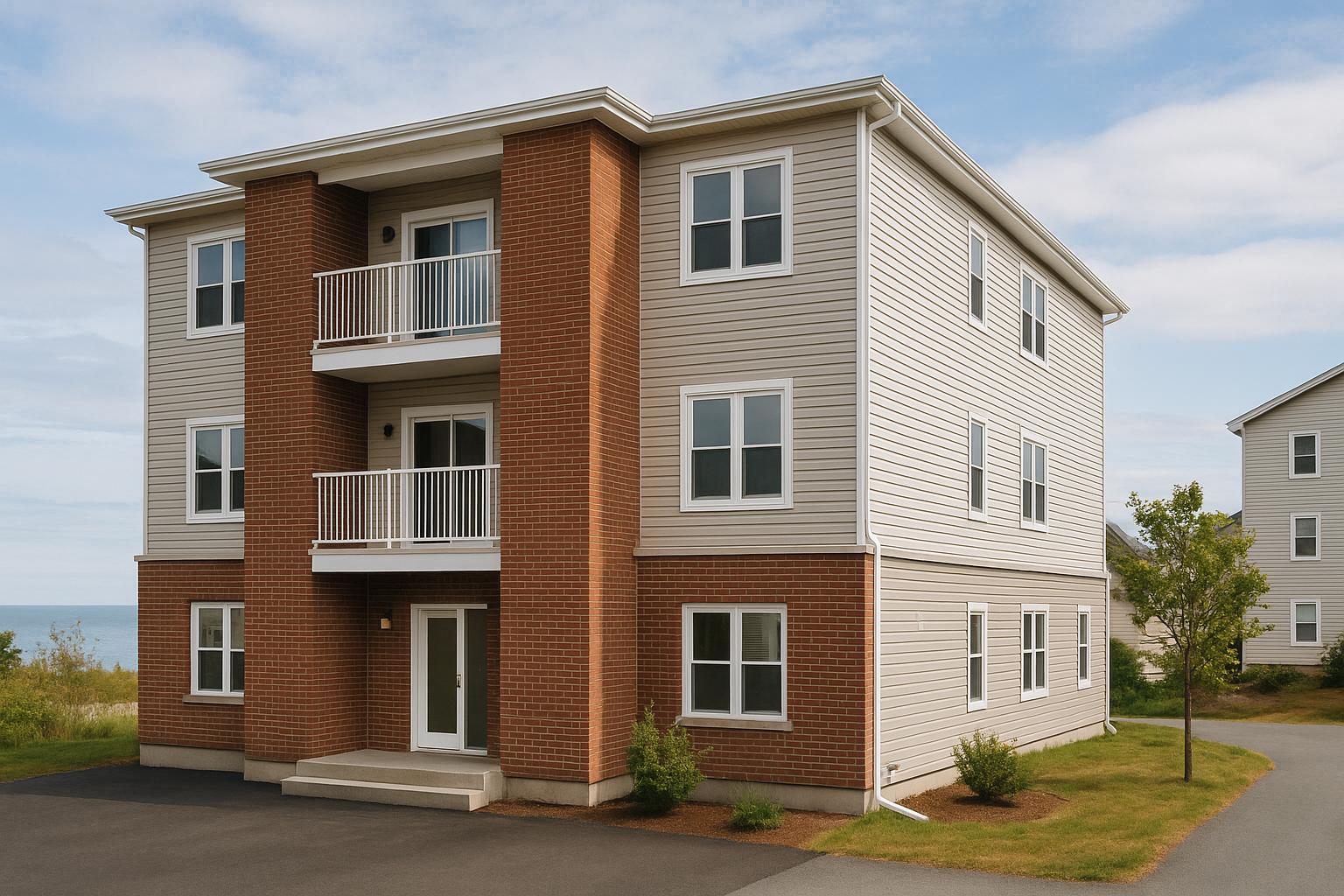When it comes to building a successful rental property portfolio, especially in the Maritime provinces like Nova Scotia, understanding how to analyze a fourplex is critical. A fourplex represents an ideal starting point for property owners looking to diversify and generate steady income, but it can also be intimidating to assess property values, rent rolls, and capitalization rates (cap rates).
This detailed guide will walk you through the essential steps of evaluating a fourplex, providing insights from the video’s practical example and tailoring the analysis to property owners within 90 minutes of Halifax who are eager to construct or invest in efficient rental properties.
Whether you are a first-time builder, a portfolio builder, or a property owner recovering from past construction challenges, this guide will empower you with knowledge to make informed decisions.
Introduction to Fourplex Analysis
A fourplex, or a multi-family residential building with four units, is a popular investment choice. They offer a manageable entry point into real estate investment while providing opportunities for strong cash flow and asset appreciation. The video emphasizes that successful property analysis boils down to three main components: location, financial evaluation, and understanding income potential.
The following sections will break down each component, using the steps and concepts introduced in the video to help you confidently evaluate a rental property.
Step 1: Researching Property Listings
The first step in analyzing a fourplex is identifying potential properties. The video demonstrates a search process using LoopNet, a commercial real estate platform. While the example focuses on searching for properties in Washington State, the same principles apply in Nova Scotia.
Key Tips for Property Search:
- Set Clear Filters: When searching online, define specific parameters such as property type (multi-family), unit count (minimum and maximum of four units), and budget range.
- Adjust Based on Market Realities: If your first search yields no results, tweak the filters by increasing the price range or expanding your geographic area. For example, areas outside Halifax like Truro or Dartmouth may offer better opportunities.
- Assess Initial Listings: Look for properties with 100% occupancy rates and updated amenities. These indicators often point to well-maintained investments with strong income potential.
Step 2: Evaluating Financial Metrics
Once you’ve identified a fourplex of interest, the next step is performing a financial analysis. The video highlights two pivotal metrics: cap rate and rent rolls.
What is a Cap Rate?
The capitalization rate (cap rate) is a measure of a property’s profitability. It is calculated by dividing the property’s net operating income (NOI) by its purchase price.
Formula:
Cap Rate (%) = (Net Operating Income / Purchase Price) × 100
For example:
- Purchase Price: $900,000
- Gross Potential Income: $67,200/year
- Operating Expenses: $13,000/year
- Net Operating Income = $54,200/year
Cap Rate = ($54,200 ÷ $900,000) × 100 = 6.02%
A cap rate of 6% is considered healthy for multi-family properties. However, lower rates may still offer opportunities, especially if you plan to improve the property and increase rents.
Understanding Rent Rolls
Rent rolls provide a detailed breakdown of rental income from each unit. They include:
- Monthly rent for each unit
- Occupancy rates
- History of rental payments
In the video, properties with 100% occupancy and consistent rental histories were flagged as strong investments. It’s essential to request and review rent rolls before committing to a purchase. They reveal whether tenants are reliable and whether the property’s income matches its advertised potential.
Step 3: Assessing Property Value vs. Price
A critical part of the analysis is comparing the property’s assessed value to the asking price. The video example shows a property listed for $525,000 with an assessed value of $328,658. This difference suggests that improvements or market trends have driven up the property’s worth.
While a higher listing price isn’t necessarily a dealbreaker, ensure the additional value is justified by rental income, location, or potential for appreciation.
Step 4: Investigating Location and Market Trends
In real estate, location is everything. The video stresses the importance of choosing areas with:
- Strong job markets
- Growing populations
- Proximity to amenities like schools, transit, and shopping
In the Halifax region, areas like Bedford, Dartmouth, and Truro are growing hotbeds for rental properties. Evaluate whether the location’s demand will sustain occupancy rates and support rent increases over time.
Advanced Strategies: Maximizing Value
For experienced property owners, the video introduces the concept of forced appreciation. This involves improving a property to increase its value and rental income.
Steps to Force Appreciation:
- Renovate Units: Upgraded kitchens, bathrooms, and flooring attract higher-quality tenants who are willing to pay more.
- Raise Rents Strategically: Incremental rent increases can significantly boost your property’s annual income, increasing its valuation based on cap rate calculations.
- Reduce Operating Costs: Invest in energy-efficient upgrades or streamline property management to lower expenses.
For example, raising monthly rent by $50/unit in a fourplex generates an additional $2,400/year, which increases the property’s overall value by tens of thousands of dollars when calculated using the cap rate.
Avoiding Common Pitfalls
The video highlights two key mistakes to avoid when analyzing properties:
- Overpaying for Properties: Ensure the price aligns with the property’s income potential. Don’t rely solely on market trends - verify financials.
- Ignoring Vacancy Risks: Even in strong markets, vacancies can occur. Factor in potential vacancy losses when calculating income.
Key Takeaways
- Cap Rates Matter: Aim for a cap rate of 6% or higher to ensure profitability.
- Rent Rolls Are Critical: Always request rent rolls to verify income and tenant reliability.
- Location Drives Value: Focus on areas with strong demand and future growth potential.
- Renovations Add Long-Term Value: Strategic upgrades can significantly increase rental income and property value.
- Understand Market Dynamics: Adjust your budget and expectations based on local market conditions.
- Review Financial Summaries: Look for properties with clear financial data to simplify your decision-making.
Final Thoughts
For property owners within Halifax and nearby regions, analyzing a fourplex may seem daunting, but it is a skill worth mastering. By applying these strategies, you can confidently assess whether a property aligns with your financial goals and build a successful rental property portfolio.
Remember, thorough research and informed analysis are the cornerstones of real estate success. Whether you’re a first-time builder or an experienced portfolio owner, take the time to evaluate cap rates, rent rolls, and market trends. This approach will set you up for long-term profitability and growth.
Source: "Why 4-Unit Apartment Buildings Are the BEST Real Estate Investment | Fourplex Strategy Explained" - Real Estate unplugged, YouTube, Aug 7, 2025 - https://www.youtube.com/watch?v=iiaAFg9Mj_0
Use: Embedded for reference. Brief quotes used for commentary/review.



